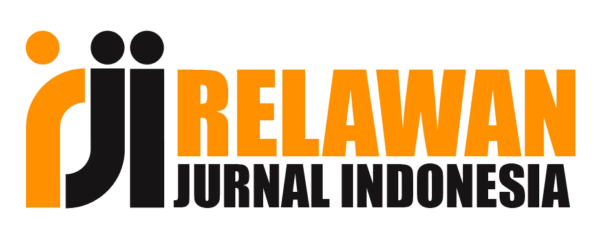ANALISIS TES BERBASIS RANKING TASK DAN PILIHAN GANDA DALAM MENGUKUR PRESTASI BELAJAR SISWA
Abstract
Telah dilakukan penelitian yang dilatarbelakangi oleh hasil survey terhadap 43 siswa SMA kelas XII IPA serta wawancara terhadap seorang guru mengenai tes. Tes formatif dengan bentuk soal pilihan ganda maupun pilihan ganda beralasan, jawaban 74% siswa berdasarkan pemahaman sendiri dan bekerjasama dengan teman, 21 % siswa melihat pekerjaan teman dan 5% siswa santai-santai saja dengan demikian guru sulit untuk mengukur prestasi belajar siswa. Sementara pelaksanaan tes yang sebenarnya bertujuan untuk mengukur prestasi belajar siswa. Penelitian ini bertujuan untuk mengetahui kesetaraan antara RTs dan pilihan ganda sebagai instrumen tes dalam mengukur prestasi belajar siswa. Penelitian ini merupakan deskriptif dengan desain Single Group Desain dan rancangan penyetaraan yang digunakan adalah Rancangan Kelompok Tunggal (RKT). Populasi penelitian adalah siswa SMA kelas X di salah satu SMA di Bandung dengan sampel 30 siswa. Instrumen tes RTs dan pilihan ganda diuji coba terhadap 96 siswa SMA kelas X, hasilnya realibilitas kedua tes 0,72 dengan kriteria baik. Dalam pelaksanaan penelitian, tes pilihan ganda dan RTs digunakan dalam waktu bersaman sebagai tes formatif. Hasil penelitian menunjukan nilai varians kedua tes 0,34 nilai tersebut lebih kecil dari nilai varians dalam tabel, hal tersebut menandakan bahwa tes RTs setara dengan pilihan ganda dalam mengukur prestasi belajar siswa dan penggunaan RTs sebagai tes mendapatkan respon yang positif dari siswa. Dengan demikian RTs dapat digunakan sebagai tes yang dapat mengukur prestasi belajar siswa.
Studies have been conducted against the backdrop of the results of a survey of 43 high school students class XII science and interviews with one of his teachers about the test. Formative tests in the form of multiple choice and multiple choice answers grounded 74% of students based on their understanding self and cooperation with friends, 21% of students see the work of friends only and 5% of students take it easy, the teacher so it is difficult to measure student achievement. Whereas the implementation of a test intended to measure student achievement. This study aims to determine the equivalence between the RTs and multiple-choice tests as an instrument to measure student achievement. This study is a descriptive with design research Single Group Design and used Equivalency Single Group (RKT). The study population was high school class of X in one high school in Bandung with the sample used is 30 students. Before research, tests multiple choice and RTs tested on 96 students high school class X, the test results obtained from both instrument test reliability 0.72 with criteria is good. In the course of research, multiple-choice test and RTs along the time as a formative test. The results showed both the value of variance test 0.34 is smaller than the value of the variance in the table, it indicates that test RTs is equivalent to a multiple-choice measure student achievement and use of the RTs as a test to get a positive response from students. RTs thus can be used as a test to measure student achievement.
Full Text:
PDF (Bahasa Indonesia)References
Anshory, Nunung Isa. (2011). Pengertian Prestasi Belajar. [online]. tersedia: http://makalah.blogspot.com/2011/10/pengertian-prestasi-belajar.html [2Februari 2012]
Aries, Erna Febru. (2011). Assessment dan Evaluasi. Malang: Aditya Media Publishing.
Arikunto, Suharsimi. (2009). Dasar-Dasar Evaluasi Pendidikan, Edisi revisi, Cetakan 9. Jakarta: Bumi Aksara.
Afian, Ruli. (2011). Analisis Kemampuan Berpikir Kritis Siswa Sekolah Menengah Pertama (Smp) Dalam Pembelajaran Pendidikan Teknologi Dasar (PTD). Skripsi Sarjana pada FPMIPA UPI Bandung: tidak diterbitkan.
Hudgins, David W. (2005). Investigation of The Effect of Rangking Task On Students Understanding of key Astronomi Topic. University of South Africa. Thesis [online]. tersedia: uir.unisa.ac.za/bitstream/10500/1231/1/thesis.pdf.
Hudgins, et al. (2007). Effectiveness of Collaborative RTss on Student Understanding of Key Astronomy Concepts. Dalam The Astronomy Education Review. Volume 5, April 2006 – Nov 2007, Isu 1. [online]. tersedia: http://scitation.aip.org/journals/doc/AERSCZ-ft/vol_5/iss_1/1_1.html
O’Kuma, et al. (2000). Rangking Task Exercise in Physics. USA: Upper Saddle River.
O’Kuma, et al. (2004). Rangking Task Exercise in Physics:Student Edition Instructor’s Guide. USA: Upper Saddle River.
Lampiran Peraturan Menteri Pendidikan Nasional Nomor 20 Tahun 2007 Tanggal 11 Juni 2007 Standar Penilaian Pendidikan.
Ranah Penilaian Kognitif, Afektif dan Psikomotor. Dalam Blog Biologi. [online]. tersedia: http://zaifbio.wordpress.com/2009/11/15/ranah-penilaian-kognitif-afektif-dan-psikomotorik/ [2 Februari 2012]
Sudjana. (2005). Metoda Statistika. Bandung: Tarsito.
Sukirno. (2007). Penyetaraan Tes UAN: Mengapa dan Bagaiman?. Cakrawala Pendidikan (XXVI) No. 3. 305-321. [online]. tersedia: https://docs.google.com/viewer?a=v&q=cache:I60h1pDNoYgJ:isjd.pdii.lipi.go.id/admin/jurnal/26307305321.pdf+penyetaraan+tes&hl=id&gl=id&pid=bl&srcid=ADGEESi_NB3SsWQktX7BcZ6eyPvt0caaiQqX5kp85HW5kKjIRyhYnLRu03S556QAunBxTfuwnsPPbSrhQaok5iCEEN5si3IxvMxDoTapsmXa2zRH1ZAQEJFdtk3pwhBaUviW5yiPckB&sig=AHIEtbRN5Ieb6BIyDuADE6pcALupzqFu9w. [30 Maret 2012]
Sugiyono. (2011) . Metode Penelitian Pendidikan. Bandung :Alfabeta.
Taksonomi Bloom. Dalam Wikipedia Bahasa Indonesia. [online]. tersedia: http://id.wikipedia.org/wiki/Taksonomi_Bloom [2 Februari 2012].
Wijaya, Agus Fany Chandra. RTs Exercises (RTE) Sebagai Alternatif Latihan Konseptual Dan Assessmen Dalam Pembelajaran Fisika. Jurusan Pendidikan Fisika Universitas Pendidikan Indonesia. [online]. tersedia: https://file.upi.edu/
DOI: https://doi.org/10.17509/wapfi.v1i1.4890
Refbacks
- There are currently no refbacks.
Copyright (c) 2017 Wahana Pendidikan Fisika
The Journal Wahana Pendidikan Fisika http://ejournal.upi.edu/index.php/WapFi/ is licensed under a Creative Commons Attribution-ShareAlike 4.0 International License
The Journal WaPFi (Wahana Pendidikan Fisika).
All rights reserverd. pISSN 2338-1027 eISSN 2685-4414
Copyright © Faculty of Mathematics and Science Education (FPMIPA) Universitas Pendidikan Indonesia (UPI)










